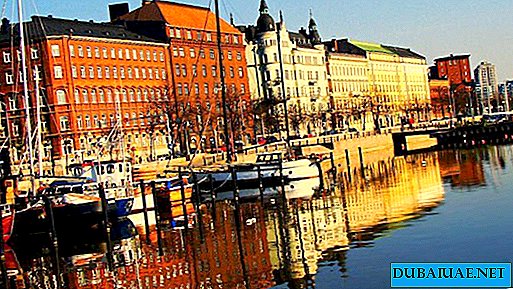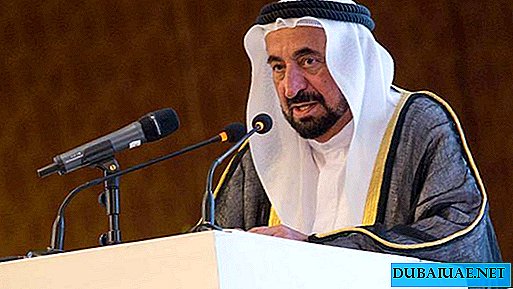THIS YEAR, GREUBEL FORSEY'S HOUR DUAL WAS 10 YEARS OLD. HOW I TOLD OUR MAGAZINE ONE OF THE FOUNDERS OF THE BRAND STEPHEN FORCY IS AN EXCELLENT REASON FOR COLLECTORS AND EXPERIENCES OF COMPLEX MECHANICS TO EXPLORE THE WHOLE STORY OF THIS UNUSUAL PURPOSE.
Wave and stone
The creators of the Greubel Forsey brand have repeatedly emphasized that they have no secrets from watch connoisseurs. Even the walls of their modern manufactory in La Chaux-de-Fonds, surprisingly "sprouting" from a historic building of the 16th century, are completely transparent. The only question that cannot be answered is who is the main one in this company? Both Robert Grubel and Stephen Forsy will mysteriously smile and nod at each other.
The long-standing friendship of an Englishman from London's high society and an Alsatian Frenchman from a respected watch dynasty causes amazement and admiration for everyone who is even a little familiar with the morals of modern watchmaking and knows that watchmakers are great individualists. For example, Vianna Alter and Francois-Paul Journe could not get along under the same roof and as a result they went to different brands. And behind Greubel Forsey - 15 years of cooperation, 10 years of the brand's existence, 3 prizes at the Grand Prix d'Horlogerie de Geneve, 5 copyright inventions - and all for two. Apparently, this is a unique case in which talents really complement each other, and as a result, a clock is born that simply could not be reproduced by the imagination of only one person.
The paths of the masters crossed in 1992, when both began to work in the atelier of complex mechanics Renaud & Papi, which nurtured a galaxy of talented watchmakers of our time. Seven years later, the friends came together to found their own independent company, Complitime, and after another five years of intensive work at the exhibition in Basel, the first result of joint creativity was presented - Double Tourbillon 30 °, released under the Greubel Forsey brand. Stephen Forsi recalls that time: “Naturally, we were not the first brand to introduce our own tourbillon. But our design was different from all the others in that it was based on a fundamentally new architecture and an understanding of how the world works.”
Right angle view
The uniqueness of the Double Tourbillon 30 ° was that it was indeed the first tourbillon since the time of Abraham-Louis Breguet, which is fully adapted to the wristwatch. Breguet developed a tourbillon for pocket watches, in which the balance was constantly in an upright position. The module transferred to the horizontal wrist mechanism not only did not help to cope with the effect of gravity, but often worsened the accuracy of the course, since it consumed a lot of energy. From here the idea of multi-axis tourbillons, realized by many prestigious manufacturers, was born, but they also had their drawbacks. In particular, it was necessary to reduce the size of the carriage, in addition, the angle of 90 °, under which the internal and external axes were located to each other, was itself a source of positional error. Stephen and Robert came up with an original scheme, unprecedented in history: a double tourbillon, where the second carriage is tilted 30 ° and placed in the first. The inner carriage rotates at a speed traditional for tourbillons - one revolution per minute, and the outer - four times slower. Thus, distance reduces the positional error to a minimum and maintain a large balance, ensuring both accuracy and maximum entertainment.
Stephen Forsi: “Although we made all the necessary measurements and could clearly demonstrate that our mechanism is more accurate than a regular flat tourbillon and a right angle tourbillon, collectors were primarily attracted to the Double Tourbillon 30 ° how it looks. We were told: it’s not a watch, but a work of art! Robert and I didn’t agree: we are watchmakers, and this is a watch, they show time ... No, the collectors objected, everyone looks at the balance dancing in the double tourbillon, and not at the arrows. Then we realized that in watchmaking, aesthetics is no less important, it practical. "
After the first experience, the partners developed their own design principle, which is not changed even today - the watches are developed from the very beginning comprehensively, in close cooperation of engineers and artists. Each function, each indication is created based on how it will look in the finished watch. Naturally, priority remained for multidimensional designs.
In 2006, Greubel Forsey took part in the Opus project for Harry Winston, making a version of his proprietary 30-degree tourbillon, and then developed an even more spectacular and complex design - the Quadruple Tourbillon, which employs not just one, but two tilted tourbillons rotating in different sides and connected by differential. Subsequently, in the history of the brand, both of these inventions received the corresponding names: Invention Piece 1 for Double Tourbillon 30 ° and Invention Piece 2 for "four times the tourbillon".
Eternal values
 Meanwhile, Greubel Forsey itself was growing rapidly. Partners bought an old building in La Chaux-de-Fonds and turned it into a modern manufactory, integrating additional space into a 16th-century architectural monument. The independent company attracted so much attention that the powerful Richemont group invested in it, as a result of which Greubel Forsey got the opportunity to present its new products at the most prestigious watch salon in the world - Geneva SIHH.
Meanwhile, Greubel Forsey itself was growing rapidly. Partners bought an old building in La Chaux-de-Fonds and turned it into a modern manufactory, integrating additional space into a 16th-century architectural monument. The independent company attracted so much attention that the powerful Richemont group invested in it, as a result of which Greubel Forsey got the opportunity to present its new products at the most prestigious watch salon in the world - Geneva SIHH.
True, Stephen Forsi is confident that the brand’s main value is still that it remains authorial, independent and produces a very limited number of high-end watches: "We create no more than 100 copies a year, so each model has a very limited edition. Many customers are forced to get on the waiting list, but the expectation is worth it, because every mechanism developed by Greubel Forsey is designed to enable people to enjoy their work for many years. finish. Only one Quadruple Tourbillon mechanism requires about eight months of manual labor. "
In 2009, the time came for the third invention, even more spectacular and dynamic - the Tourbillon 24 Secondes. Although the tourbillon had only one carriage (naturally inclined, at an angle of 25 °), it made a revolution in 24 seconds.
Meanwhile, the well-known double tourbillon appeared in the unexpected performance of the Double Tourbillon 30 ° Technique with a partially open movement and a power reserve of up to 70 hours, provided by two reels connected in series. It was this model that the creators used as a springboard for experiments with unexpected modern materials - in 2013, instead of the usual gold and platinum, collectors saw a completely black tourbillon in a titanium case with a technical ADSL coating.
Gradually, the masters began to supplement their enchanting tourbillons with new complications. Organic and spectacular, as is customary at Greubel Forsey. In 2012, the first model of the brand with world time appeared on the basis of the Tourbillon 24 Secondes. And how! Indication of 24 time zones of the planet was carried out by a real globe built into the case at the “7 o’clock” mark. And as one of the gifts for the 10th anniversary, the brand presented its fans, perhaps the most difficult model to date, QP a Equation - a tourbillon with an eternal calendar and the equation of solar time. Greubel Forsey demonstrated that she still knows how to surprise, having created the second anniversary edition, intended ... for the beautiful half of humanity. The fast-paced Tourbillon 24 Secondes Contemporain tourbillon appeared in an exquisite jewelry performance, adorned with 272 baguette-cut diamonds weighing 9.71 carats. Stephen Forsi commented on the unexpected premiere: "We have been asked to make a ladies watch for many years. And we decided that now is the time to release a model designed for women collectors, which would be not only complex, but also very beautiful."
Window to art
Apparently, the words about watches as a work of art, said in the year of the debut, made a great impression on the founders of Greubel Forsey, as they recently decided on the most unusual experiment in modern watchmaking.
Last year, the premiere of the Art Piece project took place - next to the 30-degree tourbillon, a real art masterpiece was placed. Art Piece 1, created in collaboration with the famous British artist Willard Wigan, is a micro-sculpture hidden in the watch case. The object is so small that it can literally fit in the eye of a needle. Therefore, the masters equipped the case with a unique lens with a 26x magnification and a complex optical system that allows you to consider a precious work of art in natural light. Each instance is created only on order, therefore, exists in a single instance. Moreover, the customer himself chooses the theme of microcomposition. For example, Wigan made a ship sailing along the waves and a hummingbird sitting on a branch, but the authors keep many orders secret. The project turned out to be so successful that the waiting list has already stretched out for many months, and meanwhile, Stephen Forsi says that he is seriously thinking about Art Piece 2 and does not exclude that it will be a completely different artist and a different concept.
"For me, the essence of Art Piece is that the owner of the watch gets the opportunity to literally look into another world. The joy of discovery is one of the greatest emotions for the Earth. Giving it to customers again and again is the philosophy of Greubel Forsey."











